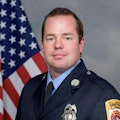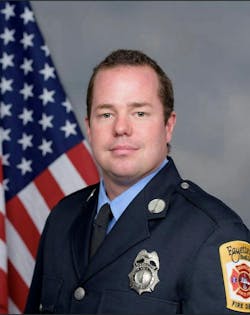Key Highlights
- Developing fire department leaders means fostering critical thinkers, investing in mentorship, teaching the differences between managing resources and leading people, and empowering every rank with purpose.
- Deliberate investment in leadership at every level creates a culture of ownership that allows young officers and aspiring mentors to test ideas, build trust and lead with purpose.
- Transactional leadership is built on structure, rules and task completion. It’s necessary in high-stakes, high-tempo environments where clarity and compliance save lives. Transformational leadership builds organizations. It inspires, empowers and lifts people beyond their current role.
Leadership in the fire service isn’t forged in isolation nor born solely through promotion. It’s built intentionally, through example, education and mentorship. Far too often, departments confuse time served with wisdom earned or, worse, mistake rank for readiness. The result? A cycle of reactive management rather than proactive leadership.
If we want better outcomes for our people and the citizens who we serve, we must build better leaders—not just officers. That means fostering critical thinkers, investing in mentorship, teaching the differences between managing resources and leading people, and empowering every rank with purpose. It’s a matter of stewardship. If we don’t grow our people, we fail our future.
Stewardship: Leading for tomorrow, not just today
Stewardship isn’t glamorous. It doesn’t get applause. However, it’s the heartbeat of leadership. It’s the quiet, unseen work of preparing others to succeed, of protecting both your people and the mission, even when it costs you convenience, credit or comfort.
True stewards know that their influence should outlive their title. They don’t hoard knowledge nor gatekeep experience. Instead, they train successors. They give freely, knowing that their legacy won’t be found in a badge but in the confidence, competence and character of those who they leave behind.
I’ve seen firsthand how stewardship can transform a crew, a shift, a station and even an entire department. When we deliberately invest in leadership at every level, we create a culture of ownership, where firefighters, engineers, lieutenants and chiefs all understand their role in shaping the future. This approach sharpens the tools that are in our leadership toolbox and refines the mindset of emerging leaders. It allows young officers and aspiring mentors to test ideas, build trust and lead with purpose long before they ever pin on bars or bugles.
Critical thinking and the myth of rank = readiness
In too many departments, promotions are treated like finish lines, rewards for time served rather than investments in future leadership. However, a gold badge doesn’t grant wisdom, and rank without readiness is a dangerous thing. It leaves new officers unprepared, unsupported and uncertain. Worse still, it sets a precedent: that authority can be earned without accountability, and that leadership is about title, not action.
Critical thinking is the antidote. It teaches our people not just what to do but why. It gives them the tools to assess, adapt and make sound decisions under pressure. In the fire service, that might mean recognizing when standard operating procedures must be adjusted on the fly or when tradition is harming—not helping—our mission. It might mean pausing long enough to ask, “Is this the best decision for the team?” rather than simply, “What’s always been done?”
We must develop thinkers, not just doers. Long before they test for rank, we must mentor our firefighters to think in the ways that leaders think. If we aren’t preparing them to take our place—if we aren’t deliberately teaching them to question, refine and own their decision-making—then we aren’t leading. We just are recycling the same cycle, hoping for a different result.
At its core, leadership is about decision-making, and the worst decision that you can make is none at all. Indecision paralyzes progress and puts lives at risk—on and off of the fireground. When leaders choose not to decide, they surrender control to the chaos of the moment. The incident then dictates their actions, instead of the other way around.
On the other hand, making the wrong decision still can be a step forward. You can see the results, course-correct and learn. You can reanalyze, regroup and refocus your efforts. However, you can’t do that when you’re frozen by fear of failure. That’s why we must cultivate mental agility. We must teach future leaders how to trust their instincts, listen to their crew and move with intention—even in uncertainty.
If we aren’t mentoring them to think critically, adapt quickly and own their decisions long before they’re promoted, then we aren’t developing leaders. We’re manufacturing rank. That’s a liability that we can’t afford.
Transformational vs. transactional
Leadership isn’t one-size-fits-all. In the fire service, we need both transformational and transactional leaders, but we must understand when and how to use each approach. The difference lies in motive and method.
Transactional leadership is built on structure, rules and task completion. It’s necessary in high-stakes, high-tempo environments where clarity and compliance save lives. A fireground incident requires swift communication, chain-of-command accountability and tactical discipline. At its best, transactional leadership is efficient, focused and action-oriented.
Transformational leadership builds organizations. It inspires, empowers and lifts people beyond their current role. Transformational leaders connect the daily grind to a deeper mission. They develop individuals, challenge complacency and set the tone for long-term culture. They don’t just enforce expectations; they raise them.
The best leaders know when to switch gears. They might be transactional on scene of a working fire then pivot to transformational leadership in the kitchen afterward, using the moment to reflect, coach and mentor. This duality—this ability to lead both in crisis and in calm—is what separates true leaders from mere managers.
Many departments mistakenly create managers, not leaders. Managers track metrics, enforce policy and keep the system running. However, leadership requires vision. It demands emotional intelligence, the willingness to serve others and the humility to admit mistakes. A manager might preserve the status quo, but a leader builds something better.
We must develop our people to do both but never let them confuse the two. When the smoke clears, it isn’t the checklist that stays with a crew; it’s how they were led through it.
Mentorship as the cornerstone
Mentorship is the most enduring and most powerful leadership tool that we have in the fire service. Titles might change, policies evolve and crews rotate, but the lessons that are passed down from one firefighter to another shape the culture more than any manual ever will.
True mentorship isn’t about telling someone what to do; it’s about showing them how to think. It’s being present, observant and invested. It’s correcting without demeaning, guiding without controlling, letting others fail safely, then helping them understand why, so they’re sharper next time.
Some of the best leaders who I’ve worked under were the ones who saw potential and refused to let it go to waste. They offered their time, their wisdom and their presence. They made space for questions. They modeled calm under pressure. They never stopped learning themselves.
Mentorship also isn’t just top-down. A seasoned captain can learn just as much from a curious rookie if the captain is humble enough to listen. Every exchange—on the training ground, at the kitchen table, in the cab—can be a teaching moment.
Departments that prioritize mentorship create leaders at all levels. They don’t just fill positions; they prepare people. They understand that the best succession plan is built one conversation at a time, one opportunity at a time, one firefighter at a time.
If we want better leaders, we must become better first.
Legacy is built, not bestowed
Leadership isn’t granted with a badge or a promotion. It’s forged through service, sacrifice and a relentless commitment to growth. If we want to build better leaders, we must do more than assign rank. We must invest in stewardship, teach decision-making, develop emotional intelligence and commit to mentorship.
The fire service doesn’t need more managers to maintain the status quo. It needs transformational leaders who can adapt, empower and leave behind a culture that’s stronger than the one that they inherited.
Every shift is a classroom. Every firehouse is a leadership academy. Every call is a test, not just of tactics, but of values.
If we want our departments to thrive long after we’re gone, we must lead with purpose today. The legacy that we leave won’t be written in our titles. It’ll be etched in the leaders who we helped to shape.
About the Author

Tyrral Quinn
Tyrral Quinn is a veteran firefighter with the Fayetteville, NC, Fire Department and a leadership instructor. He writes about servant leadership, stewardship and decision-making under pressure in his forthcoming book, “The Calling: The Unseen Work of Leading Well.”
